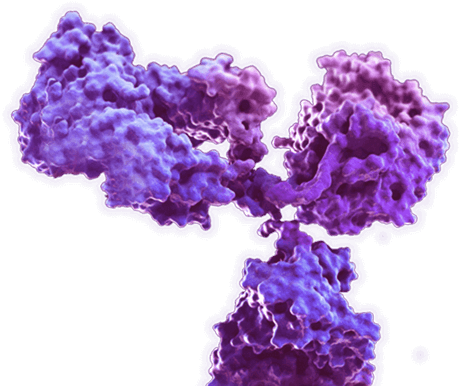Mouse Anti-OR2AT4 Antibody (MO-AB-00943L)
Cat: MO-AB-00943L
Certificate of Analysis Lookup
To download a Certificate of Analysis, please enter a lot number in the search box below. Note: Certificate of Analysis not available for kit components.
Lot Number
To download a Certificate of Analysis, please enter a lot number in the search box below. Note: Certificate of Analysis not available for kit components.
Lot Number
- Product List
- Specifications
- Application Information
- Target
| Sub Cat | Clonality | Species Reactivity | Application | Clone | Conjugate | Size | |
| MO-AB-00943L | Monoclonal | Elephant (Loxodonta africana), Cat (Felis catus), Chimpanzee (Pan troglodytes), Ferret (Mustela Putorius Furo), Guinea pig (Cavia porcellus), Horse (Equus caballus), Rabbit (Oryctolagus cuniculus) | WB, ELISA | MO00943L | 100 µg | ||
| MO-AB-09107Y | Monoclonal | Rabbit (Oryctolagus cuniculus) | WB, ELISA | MO09107Y | 100 µg | ||
| MO-AB-09682W | Monoclonal | Cat (Felis catus) | WB, ELISA | MO09682W | 100 µg | ||
| MO-AB-14649W | Monoclonal | Chimpanzee (Pan troglodytes) | WB, ELISA | MO14649W | 100 µg | ||
| MO-AB-35248W | Monoclonal | Ferret (Mustela Putorius Furo) | WB, ELISA | MO35248W | 100 µg | ||
| MO-AB-42210W | Monoclonal | Guinea pig (Cavia porcellus) | WB, ELISA | MO42210W | 100 µg | ||
| MO-AB-45874W | Monoclonal | Horse (Equus caballus) | WB, ELISA | MO45874W | 100 µg |
Specifications
| Host species | Mouse (Mus musculus) |
| Species Reactivity | Elephant (Loxodonta africana), Cat (Felis catus), Chimpanzee (Pan troglodytes), Ferret (Mustela Putorius Furo), Guinea pig (Cavia porcellus), Horse (Equus caballus), Rabbit (Oryctolagus cuniculus) |
| Clone | MO00943L |
| Specificity | This antibody binds to Elephant OR2AT4. |
| Format | Liquid or Lyophilized |
| Storage | Store at 4°C: short-term (1-2weeks) Store at -20°C: long-term and future use |
| Purity | > 90% was determined by SDS-PAGE |
| Purification | Purified with Protein A or G affinity chromatography |
| Cellular Localization | Plasma membrane; Other locations |
Application Information
| Application | WB, ELISA |
| Application Notes | ELISA: 1:1000-1:3000 Other applications are to be developed. The optimal dilution should be determined by the end user. |
Target
| Introduction | Olfactory receptors interact with odorant molecules in the nose, to initiate a neuronal response that triggers the perception of a smell. The olfactory receptor proteins are members of a large family of G-protein-coupled receptors (GPCR) arising from single coding-exon genes. Olfactory receptors share a 7-transmembrane domain structure with many neurotransmitter and hormone receptors and are responsible for the recognition and G protein-mediated transduction of odorant signals. The olfactory receptor gene family is the largest in the genome. The nomenclature assigned to the olfactory receptor genes and proteins for this organism is independent of other organisms. (From NCBI) |
| Product Overview | This product is a mouse antibody against OR2AT4. It can be used for OR2AT4 detection in Western Blot, Enzyme-Linked Immunosorbent Assay. |
| Alternative Names | Olfactory Receptor Family 2 Subfamily AT Member 4; Olfactory Receptor, Family 2, Subfamily AT, Member 4; Olfactory Receptor OR11-265 Pseudogene; Olfactory Receptor OR11-265; Olfactory Receptor 2AT4; OR11-265 |
| UniProt ID | G3TMM4 |
| Protein Refseq | The length of the protein is 313 amino acids long. The sequence is show below: MEATICNGSVDASPVFYLVGIPFLPESLFLLVFFIFLLFYLLIVMGNALILVAVVAEPSLHKPMYFFLLNLSVLDILFTTTTVPKMLSLFLLGDHFLSFPSCLVQMFLFQSFTCSEAFILVVMAYDRYVAICRPLHYPVHMTPQTNAALAASAWLTALLLPIPAVVKTSQMAYDNIAYIYHCFCDHLALVQASCSDTTPQTLMGFCIAMVVSFLPLLLVLLSYAHILASVLCINSREGRSKAFSTCSSHLLVVGTYYSSIAIAYMAYRADLPLDFHIMGNVAYAILTPMLNPLIYTLRNKDVKAAVTKIARLK. |
For Research Use Only | Not For Clinical Use.
Online Inquiry

